The Role of Hybrid Care in Preventing Caregiver Burnout

Understanding Hybrid Care and Its Importance in Caregiver Wellness
As caregivers increasingly face challenges related to burnout, emotional exhaustion, and physical strain, innovative approaches like hybrid care models offer promising solutions. Combining in-person support with telehealth services, hybrid care can improve accessibility, promote wellness, and sustain caregiver engagement. This article explores the multifaceted role of hybrid care in preventing caregiver burnout, supporting sustained weight management, and advancing holistic wellness programs within community and healthcare settings.
What Is Hybrid Care and Why It Matters for Caregivers?

Definition of Hybrid Care
Hybrid care is an innovative healthcare delivery approach that combines both in-person and telehealth services. This model allows patients to receive personalized care through physical visits while also benefiting from remote, technology-enabled support.
Combination of In-Person and Telehealth Services
By integrating face-to-face consultations with digital interactions, hybrid care creates a flexible, accessible system. Technologies such as electronic scales for self-monitoring, automated messaging platforms like MyChart, and virtual coaching are commonly used alongside traditional clinical visits.
Benefits of Hybrid Care for Caregivers
For caregivers, hybrid care offers improved access to resources and support tailored to their unique challenges. It fosters engagement by enabling timely communication and personalized interventions without the constraints of location or scheduling. This is especially valuable in managing chronic conditions like frailty and weight management among older adults.
Hybrid care programs support caregivers by emphasizing multi-domain interventions—physical functioning, nutrition, cognition, and mental health—while reinforcing self-efficacy and social interdependence. These strategies enhance caregiving effectiveness and reduce burnout risk by facilitating practical assistance and emotional support.
How Hybrid Care Fits Into Wellness Programs
Effective wellness programs integrated within hybrid care address comprehensive needs, including physical activity, nutrition guidance, mental health support, and preventive screenings. They leverage technology and community resources to enable continuous engagement and adherence. This flexibility improves participant satisfaction and outcomes, making hybrid care a promising model for sustainable health management.
Impact of Caregiver Burnout on Health and Aging

What is caregiver burnout and what are its symptoms?
Caregiver burnout is a state of emotional, physical, and mental exhaustion caused by prolonged caregiving stress. It is characterized by emotional exhaustion, depersonalization (feeling detached from others), and reduced professional efficacy. These symptoms significantly diminish a caregiver's ability to provide effective care.
How does burnout affect biological and psychological health?
Burnout accelerates biological aging through several mechanisms including telomere shortening, chronic inflammation, and dysregulation of the hypothalamic–pituitary–adrenal (HPA) axis. Psychologically, it contributes to cognitive decline, poor sleep quality, and reduced physical activity. These effects increase vulnerability to age-related diseases and reduce overall healthspan.
What is the connection between burnout and accelerated aging?
The chronic stress associated with burnout triggers biological pathways that speed up the aging process at the cellular and systemic levels. This results in an increased risk of cognitive impairments and physical health deterioration over time, linking burnout directly to accelerated aging. Addressing burnout is crucial to promoting healthier aging and improving quality of life for caregivers and those they support.
Role of Mental Health in Caregiver Wellness and Weight Management
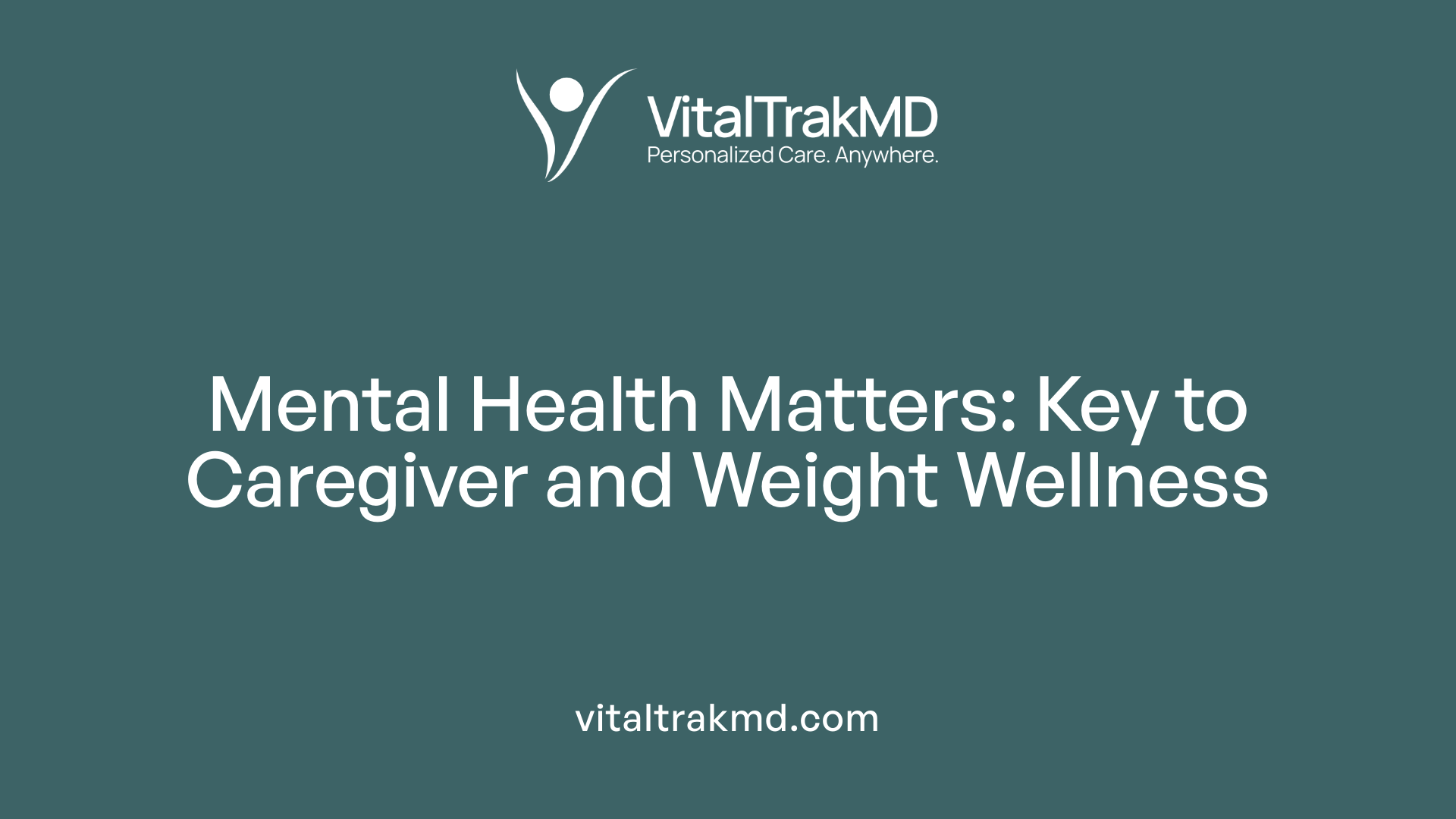
What role does mental health play in weight loss and wellness?
Mental health deeply influences motivation and behaviors essential for successful weight management and overall wellness. Stress, emotional exhaustion, and burnout can diminish an individual's drive to maintain healthy eating and physical activity habits.
For caregivers, who often face mental and emotional strain, managing mental health is crucial. Psychological resilience and social support improve their ability to sustain lifestyle changes.
Obesity is closely linked with mental health conditions such as depression and anxiety, creating a cycle where poor mental health can lead to unhealthy behaviors and further weight gain.
Influence of mental health on motivation and behaviors
Positive mental health fosters better stress management and self-efficacy, enhancing adherence to diet and exercise routines. Conversely, burnout contributes to cognitive decline, sleep disturbances, and reduced physical activity, undermining wellness efforts.
Programs incorporating multi-domain behavioral interventions that address mental status alongside physical functioning and nutrition have demonstrated improved outcomes in frailty and wellness.
Relationship between obesity and mental health
Obesity impacts mental well-being through social vulnerability and stigma, while mental health challenges can exacerbate obesity by impairing motivation and increasing emotional eating.
Supporting mental health in weight management interventions helps break this cycle, leading to sustainable health improvements.
Importance of integrated mental health support in care programs
Effective care models include tailored mental health interventions, such as stress management, resilience training, and social support. Hybrid approaches combining digital and in-person resources enable more accessible, continuous mental health support.
Tailoring these strategies to local cultural contexts and integrating caregiver engagement enhances effectiveness.
Integrating mental health support into wellness and weight management programs not only improves individual outcomes but also addresses broader issues such as caregiver burnout and aging-related frailty, promoting healthier aging and quality of life.
Comprehensive Wellness Programs: Physical Activity and Nutrition

What are the main components of effective wellness programs?
Wellness programs primarily focus on physical activity initiatives and nutrition guidance. Incorporating fitness challenges and exercise classes encourages consistent movement and helps improve physical functioning. These activities offer structured opportunities for participants to engage in regular exercise, fostering motivation and accountability.
Nutrition guidance forms another vital component. Educational resources provide participants with knowledge about healthy eating habits that support overall well-being. Together, physical activity and nutrition counseling create a holistic approach to improving health outcomes.
Incorporating fitness challenges and exercise classes
Fitness challenges and group exercise classes shake up routines, making physical activity more enjoyable and accessible. These programs are designed to cater to varying fitness levels, ensuring inclusivity and gradual improvement in strength and mobility, which are crucial for older adults and caregivers alike.
Nutrition guidance and educational resources
Educational materials on nutrition help individuals understand the importance of balanced diets rich in essential nutrients. This approach fosters better choices in meal planning and sustains healthy eating behaviors. Guidance often addresses specific needs such as protein intake, hydration, and micronutrient support relevant to aging populations.
Benefits for physical functioning and nutrition status
Wellness programs that blend physical activity with nutrition education have been shown to improve physical functioning, enhance nutritional status, and reduce social vulnerability. Participants typically experience increased strength, better mobility, and improved energy levels, contributing to their overall quality of life and caregiving capacity.
| Component | Description | Impact on Wellness Program Outcomes |
|---|---|---|
| Fitness Challenges | Structured exercise goals and competitive elements | Boosts motivation and adherence to physical activity |
| Exercise Classes | Guided physical activity sessions | Improves strength, balance, and cardiovascular health |
| Nutrition Guidance | Educational materials and counseling | Enhances healthy eating habits and nutritional awareness |
| Educational Resources | Workshops, handouts, and digital content | Supports informed decision-making for diet and lifestyle |
Behavioral Interventions to Manage Frailty and Support Caregivers

How Are Theories of Self-Efficacy and Social Interdependence Used to Support Frailty Management?
Behavioral interventions designed to manage frailty in older adults often leverage the theories of self-efficacy and social interdependence. These theories emphasize empowering individuals through confidence in their ability to perform tasks and enhancing social support systems. Utilizing these frameworks, interventions foster environments where older adults are motivated to engage actively in health-promoting behaviors, while caregivers play a vital role in reinforcing positive practices.
What Multi-Domain Strategies Are Effective for Frailty Management?
A comprehensive approach addressing multiple health domains is crucial for effective frailty management. Interventions typically include modules focusing on physical functioning, nutrition, cognition, and mental health. By simultaneously targeting these areas, programs can improve physical capabilities, nutritional status, cognitive performance, and emotional well-being, yielding significant improvements in frailty indicators.
Can Frailty Be Prevented and Reversed Through Tailored Interventions?
Research indicates that frailty is not a fixed condition but can be prevented and even reversed. Tailored behavioral interventions that factor in an individual's self-efficacy levels and social support network have demonstrated a significant reduction in frailty scores. This highlights the importance of personalized care plans and caregiver involvement to achieve sustainable improvements in older adults' health.
Why Is Caregiver Support Emphasized in These Interventions?
Caregivers are essential partners in the behavioral intervention process. Their involvement reinforces adherence to recommended lifestyle changes and provides emotional and social support vital for lasting behavior change. Programs that integrate caregivers contribute to the normalization of the intervention routines, improving the likelihood of reversing or preventing frailty.
| Intervention Aspect | Description | Impact on Frailty Management |
|---|---|---|
| Theoretical Foundation | Self-efficacy and social interdependence theories | Enhanced motivation and social engagement |
| Multi-domain Modules | Physical, nutritional, cognitive, and mental health | Holistic improvement in frailty-related health outcomes |
| Frailty Outcomes Measurement | Usage of frail-VIG scale and SPPB scores | Quantifiable decreases in frailty indices |
| Caregiver Involvement | Support and reinforcement of intervention practices | Increased adherence and sustained behavioral changes |
Effectiveness of Multi-Domain Interventions on Physical and Social Well-being

Improvements in frail-VIG and SPPB Scores
Multi-domain interventions designed to combat frailty in older adults have shown significant improvements as measured by established assessment tools. The frail-VIG scale, used to evaluate the degree of frailty, and the Short Physical Performance Battery (SPPB), which assesses physical functioning, both indicated positive changes in participants undergoing a hybrid care model. Specifically, there was a notable mean reduction in the frailty index by approximately 0.19 points, which highlights the intervention's effectiveness in reversing frailty conditions.
Physical Functioning and Social Vulnerability
The intervention incorporated diverse modules addressing physical function, nutrition, cognition, and mental health, producing holistic benefits beyond mere physical improvements. Participants experienced enhanced physical capabilities and nutritional status, contributing to a stronger overall health profile. Additionally, social vulnerability factors were mitigated, demonstrating that multi-domain interventions can strengthen social interdependence, a vital component in supporting older adults' wellness.
Holistic Outcomes of Integrated Care
This integrated approach emphasizes the benefits of combining comprehensive geriatric assessments with behavioral interventions grounded in self-efficacy and social support theories. By involving caregivers and community resources, the intervention fosters resilience and encourages sustained healthy behaviors. The continuum-of-care model used provides community-based support that addresses multiple frailty domains, affirming the value of tailored, hybrid care models in promoting physical, cognitive, and social health outcomes simultaneously.
Hybrid Care Models Enhancing Accessibility and Cost-effectiveness

Advantages of combining telehealth and in-person care
Hybrid care models blend in-person healthcare services with telehealth, offering a versatile approach to managing patient needs. This combination allows healthcare providers to deliver comprehensive, timely care while adapting to patients’ preferences and circumstances. In geriatric care, for instance, hybrid models facilitate continuous monitoring through digital tools, while maintaining essential face-to-face interactions for assessments and interventions.
Reducing healthcare costs
By integrating telehealth, hybrid care models can significantly lower healthcare spending. Telehealth reduces the need for frequent travel to clinics, decreases hospital admissions through better remote management, and optimizes healthcare provider time. For example, use of cellular-enabled devices and automated messaging within hybrid programs supports self-monitoring and early intervention, which are cost-efficient compared to conventional care pathways. Cost analyses estimate expenses around US $335 per participant over six months in hybrid weight management programs, underscoring their financial viability compared to more resource-intensive approaches.
Increasing patient and caregiver satisfaction
Hybrid care enhances satisfaction by providing flexible, accessible services suited to patient and caregiver lifestyles. Patients benefit from personalized digital communication, tailored coaching, and community-based support, fostering engagement and adherence to health goals. Caregivers play a crucial role in reinforcing these interventions, especially in managing complex conditions like frailty. Feedback indicates that the combination of technology and human support promotes accountability and empowerment, resulting in better health outcomes and improved quality of life.
In summary, hybrid care models offer important advantages by merging remote and in-person services, enabling cost-effective, patient-centered healthcare delivery that supports both patients and caregivers with enhanced accessibility and satisfaction.
Optimizing Hybrid Care: Technology Selection and Patient Engagement

Choosing appropriate technologies
Successful hybrid care models rely on selecting technologies that are accessible, user-friendly, and compatible with both patients' and providers' needs. Cellular-network-enabled devices, such as electronic scales for self-monitoring weight, have proven effective in community-based interventions. Integrating digital messaging platforms like MyChart enhances communication by delivering automated and tailored messages, supporting flexibility in care delivery.
Ensuring provider and patient engagement
Sustaining engagement among patients and healthcare providers is critical for hybrid care efficacy. Multi-tiered support, including nurse coaching and tailored messaging, fosters continuous involvement. For patients, access to coaching resources through community partnerships boosts accountability and motivation. Providers benefit from streamlined data collection via electronic health records (EHRs), enabling efficient monitoring and support.
Challenges and solutions in hybrid care delivery
Barriers such as limited digital literacy, technology access disparities, and disruptions like the COVID-19 pandemic affect engagement. Solutions include culturally sensitive adaptations of interventions, stakeholder engagement to co-create strategies, and scalable models that blend telehealth with in-person support. Such approaches promote inclusivity and sustainability, ensuring that hybrid care models effectively enhance wellness, weight management, and caregiver support across diverse populations.
Supporting Sustained Weight Loss Through Hybrid Care

How can care programs support sustained weight loss?
Care programs aiming for sustained weight loss focus on personalized, evidence-based strategies. These typically include comprehensive plans that promote healthy eating habits, increased physical activity, and behavioral modifications tailored to individual needs. Continuous support and behavioral coaching enhance adherence and help overcome challenges during the weight loss journey.
Individualized Evidence-Based Weight Loss Plans
Successful weight management programs set realistic goals aligned with established guidelines, such as achieving an initial weight loss of around 5 to 11 pounds over 10 weeks. These targets provide manageable milestones that motivate participants and encourage sustainable lifestyle changes. Personalization ensures that each plan reflects individual preferences, medical status, and lifestyle factors, boosting effectiveness.
Use of Digital Tools and Coaching
Hybrid care models integrate digital technologies like cellular-network-enabled electronic scales and patient portals to facilitate self-monitoring and communication. Automated messaging platforms, such as MyChart, enable regular check-ins and personalized tips. For participants facing greater challenges, nurse coaching and tiered support further encourage engagement. Combining technology with human interaction optimizes motivation and accountability.
Weight Loss Targets and Monitoring
Regular tracking is key for maintaining progress. Data from electronic health records and connected devices provide real-time feedback on weight trends, enabling timely adjustments to interventions. Higher self-weighing frequency, especially daily monitoring encouraged by customized messaging, correlates with improved outcomes. This continuous monitoring fosters a sense of ownership and supports sustained lifestyle changes.
These hybrid care approaches, combining individualized plans, technology, and professional support, demonstrate promising results. Preliminary studies show over half the participants achieve meaningful weight loss within months, emphasizing the feasibility and scalability of such programs in clinical practice.
Addressing Challenges in Weight Loss Programs for Caregivers
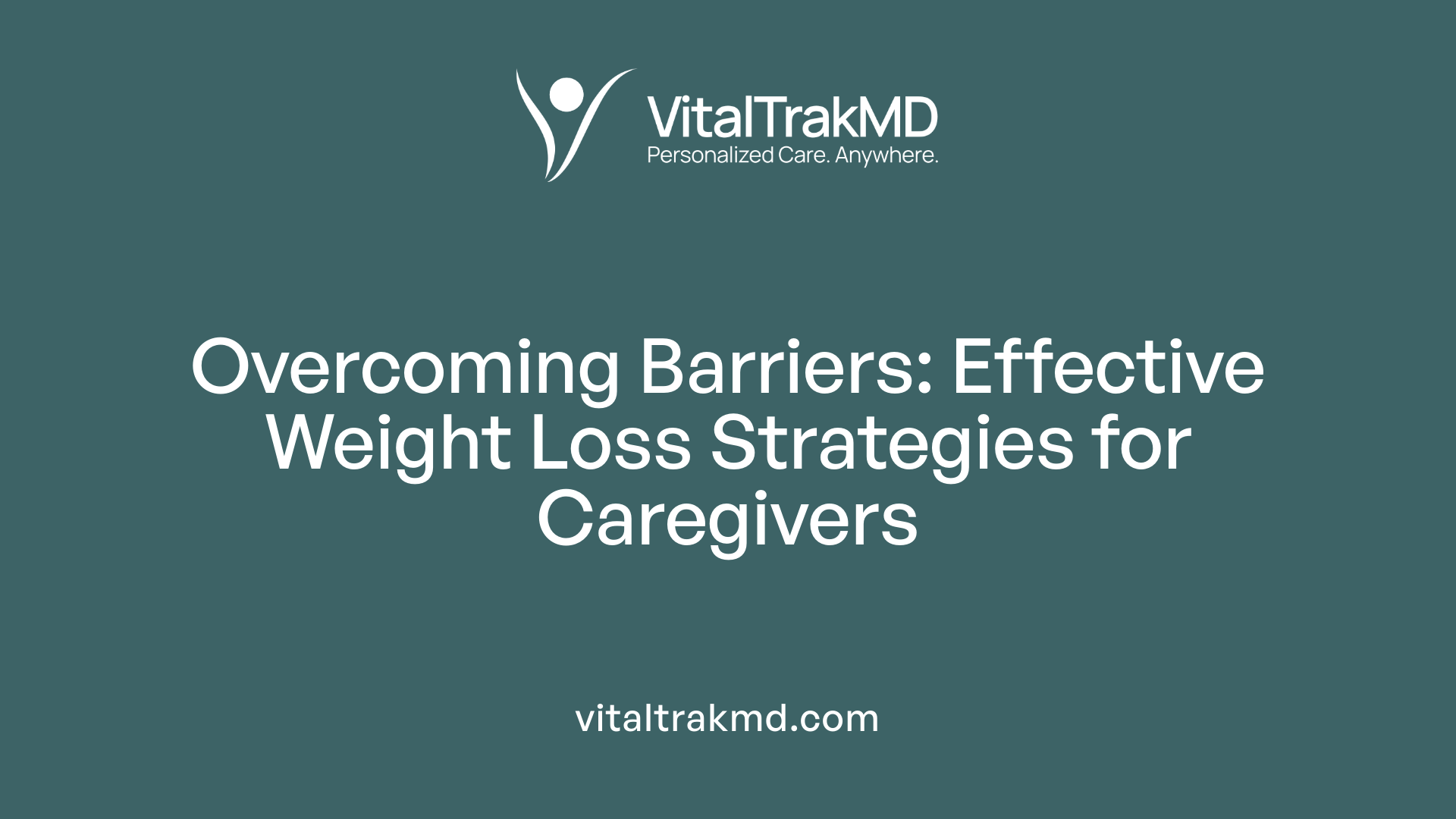
What are common challenges people face in weight loss care programs?
Weight loss care programs often encounter several hurdles that can impede success. Maintaining motivation is a frequent challenge as consistent adherence to lifestyle changes requires ongoing encouragement and accountability. Emotional eating further complicates efforts, especially under stress or burnout, triggering behaviors that counteract weight loss.
Physiological plateaus present another obstacle. As the body adapts to weight loss efforts, progress may stall, which can discourage participants if not properly managed. Moreover, systemic issues such as limited access to tailored interventions or support services reduce the effectiveness of such programs.
To overcome these challenges, multidisciplinary and personalized approaches are essential. This involves integrating behavioral interventions that build self-efficacy and social support, alongside physical, nutritional, and cognitive modules. Hybrid care models combining in-person and digital supports have shown promise, enhancing flexibility and reach for caregivers who often face time and resource constraints.
Implementing tools like electronic self-monitoring scales and tiered coaching through telehealth platforms can improve engagement and accountability. Additionally, addressing emotional and social factors with caregiver-inclusive strategies reinforces sustainable behavior changes. Understanding and adapting to these multifaceted challenges ensures more effective and accessible weight loss interventions within caregiver populations.
Role of Social Support and Coaching in Caregiver Wellness Programs

Importance of community and peer support
Community and peer support form a crucial foundation in caregiver wellness programs. Social interactions boost motivation and foster a sense of belonging, which can significantly enhance adherence to health interventions. For caregivers, who often face emotional and physical burdens, engaging with peers creates an environment of shared understanding and encouragement.
Professional coaching resources
Structured coaching resources add an expert layer of guidance to wellness programs. Professional coaches offer tailored advice, monitor progress, and provide behavioral interventions grounded in established theories like self-efficacy and social interdependence. For instance, integration of personalized nurse coaching and regional fitness professionals has been shown to increase engagement and improve outcomes such as sustained weight management.
Accountability and motivation through supportive relationships
Accountability mechanisms are powerful motivators in lifestyle change. Regular communication channels, like automated messages or personalized check-ins, coupled with in-person or telehealth coaching, help sustain self-monitoring behaviors such as daily weighing. These supportive relationships reinforce positive behaviors and help overcome challenges, leading to improved physical functioning, nutritional status, and social vulnerability.
Together, community support and professional coaching create a hybrid care model that offers caregivers flexible, accessible, and effective wellness support. This blend yields better adherence, enhances mental health, and contributes to more sustainable health outcomes for caregivers managing complex roles and demands.
Integrating Burnout Prevention Into National Health Policies
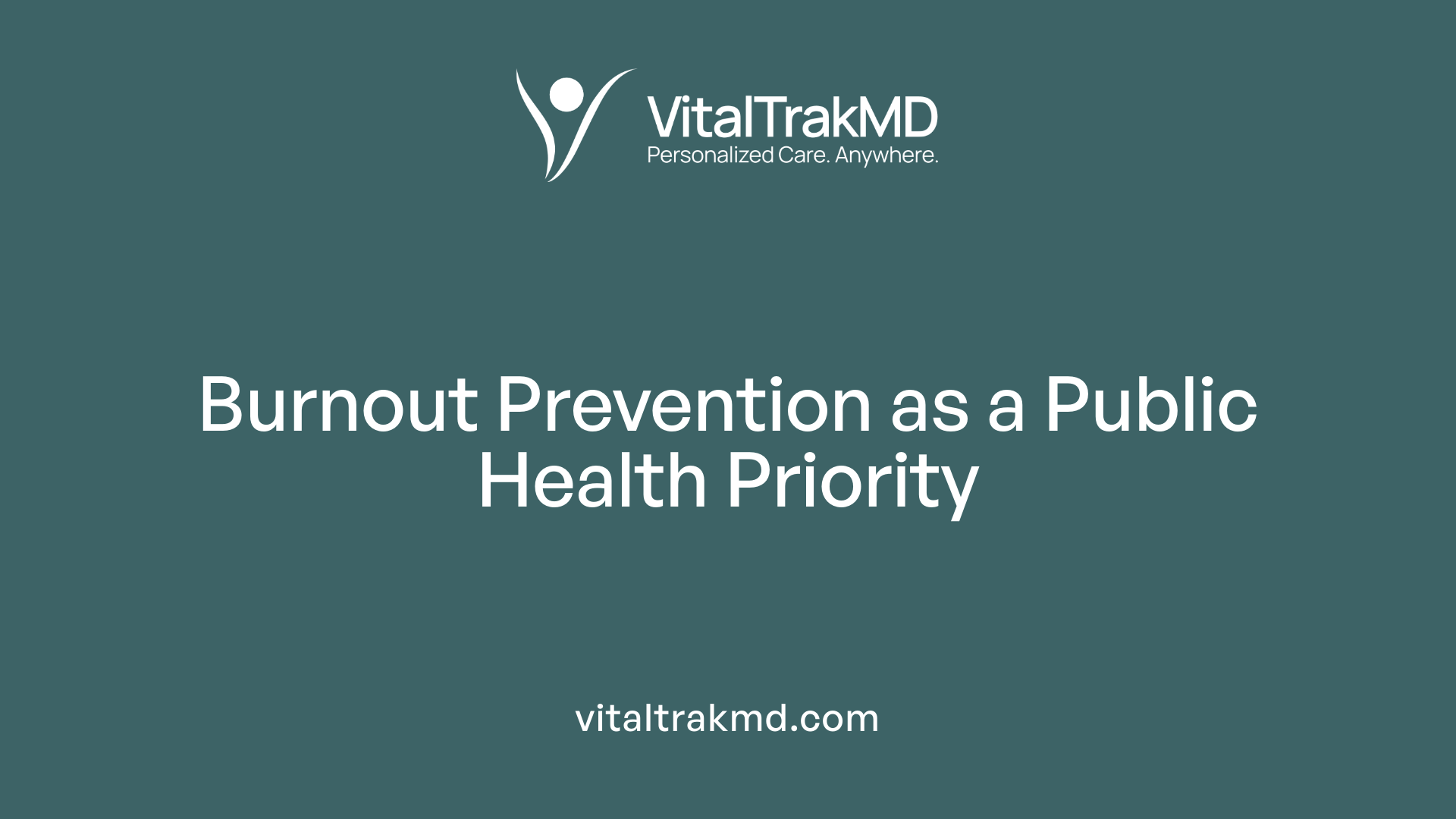
How are public health strategies addressing burnout?
Burnout, marked by emotional exhaustion and reduced professional efficacy, significantly affects health and wellbeing, especially among aging populations. Public health strategies, such as workplace-based programs like the Semmelweis-EUniWell Workplace Health Promotion Program, integrate burnout prevention into broader initiatives aimed at promoting mental and physical health. These programs emphasize assessment tools like the Maslach Burnout Inventory and include interventions such as stress management, resilience training, and social support to foster healthier aging.
What economic and quality of life benefits arise from incorporating burnout prevention in health policies?
Integrating burnout prevention at the national level can reduce healthcare costs by lowering the incidence of chronic conditions accelerated by burnout, such as cognitive decline and chronic inflammation. Furthermore, prevention efforts extend individual healthspan and improve quality of life by promoting better sleep, increased physical activity, and stronger social connections. Targeted strategies derived from regions known for longevity, like Blue Zones, advocate purpose, social cohesion, balance, and stress reduction as essential elements, improving wellness on a broader scale.
How can system-level integration of burnout prevention be achieved?
Effective integration requires culturally sensitive adaptation of prevention programs to local norms and societal challenges—Hungary serves as an example where such alignment enhances acceptance and impact. Embedding burnout prevention into national health policies ensures coordinated efforts across workplace and healthcare settings, enabling sustainable implementation. This approach facilitates scalable interventions that support caregivers and aging workers, thereby improving workforce productivity and overall societal well-being.
Workplace Health Promotion Programs and Burnout Prevention
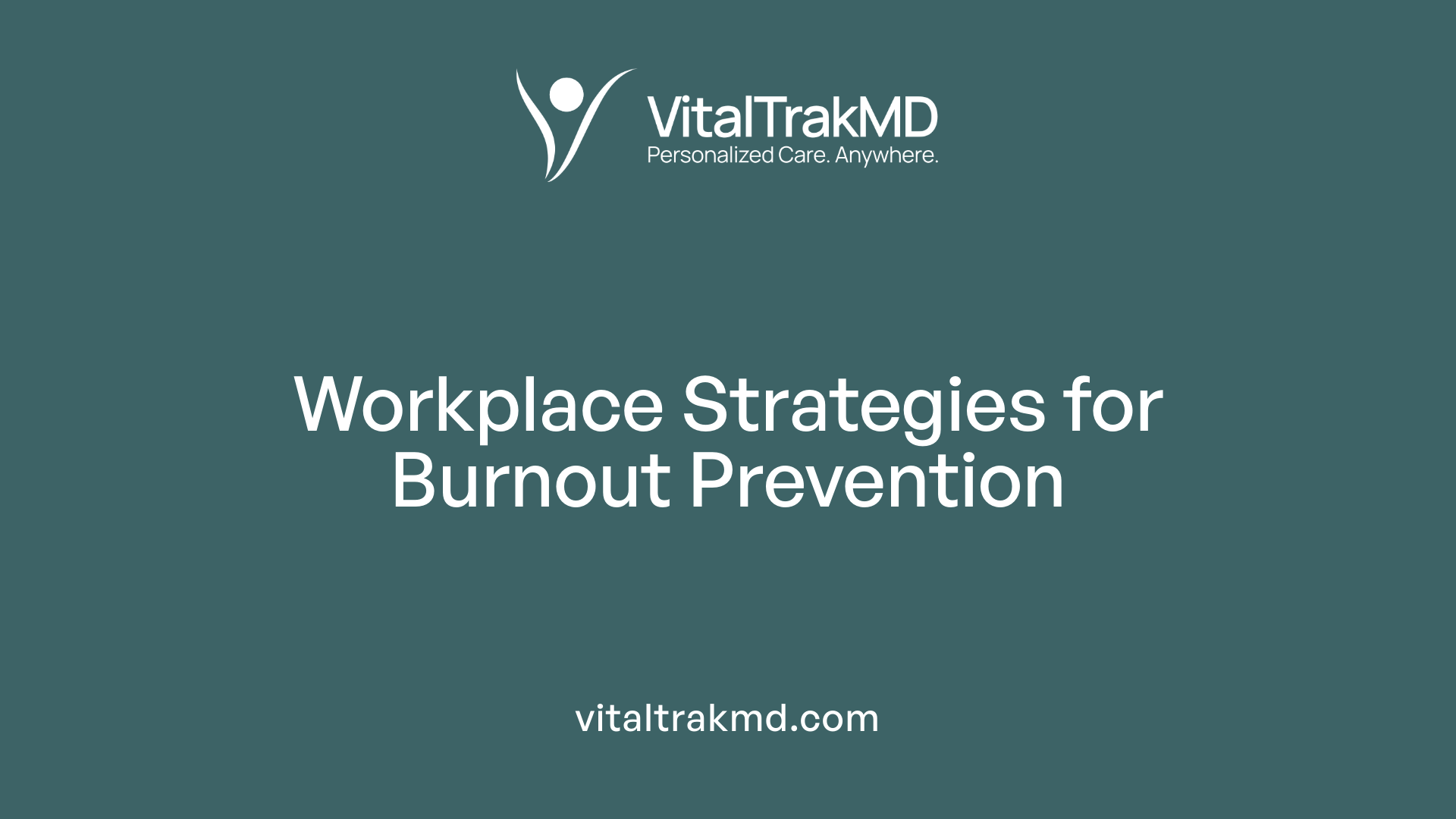
What Are Examples of Workplace Health Promotion Programs Like Semmelweis-EUniWell?
The Semmelweis-EUniWell Workplace Health Promotion Program is a leading initiative integrating burnout prevention into wider public health strategies. Its primary focus is to reduce emotional exhaustion and improve professional efficacy among aging workers, boosting overall well-being. This program sets a model by combining workplace engagement with scientific approaches to minimize burnout's impact.
How Do Stress Management and Resilience Training Help in Preventing Burnout?
Stress management and resilience training form the core of effective burnout interventions. These programs equip workers with skills to handle chronic stress better and recover from workplace challenges. Techniques may include mindfulness practices, relaxation exercises, and cognitive-behavioral strategies. By improving coping mechanisms, these trainings help maintain mental health and slow biological aging linked to burnout.
What Role Do Physical Activity and Sleep Hygiene Play in Supporting Wellness?
Promoting physical activity and good sleep hygiene is crucial in workplace health programs. Regular physical activity reduces inflammation and stress hormones, directly addressing burnout symptoms. Similarly, improved sleep quality supports brain function, mood stability, and recovery from work-related stress. Workplace initiatives often encourage daily exercise routines and provide education on maintaining consistent sleep schedules.
Overall, workplace health promotion programs like Semmelweis-EUniWell offer comprehensive approaches against burnout by combining evidence-based strategies including stress management, resilience building, physical fitness, and sleep improvement. These components work together to enhance wellness and healthy aging among employees, supporting sustained productivity and reduced healthcare burdens.
Blue Zones Lessons for Stress Reduction in Caregiving

How do Purpose, Social Cohesion, and Balance Influence Caregiver Stress?
The Blue Zones regions are famous for their populations' exceptional longevity and wellness, partially credited to lifestyle elements such as strong sense of purpose, tight social networks, and life balance. These elements are crucial in managing stress among caregivers, who often face emotional exhaustion and burnout due to their demanding roles.
A clear sense of purpose motivates caregivers to persist through challenges, fostering resilience. Social cohesion offers emotional support and shared responsibility, which reduces feelings of isolation. Lastly, balance ensures caregivers reserve time for rest and personal pursuits, mitigating stress-driven health risks.
How Can Stress Reduction Practices From Blue Zones Be Incorporated Into Care Programs?
Incorporating Blue Zones stress reduction strategies into caregiving involves embedding activities that promote mindfulness, social connection, and regular rest. Examples include group-based relaxation sessions, community-building events, and scheduling routines that encourage breaks and physical activity.
Such practices not only support mental health but also help maintain physical well-being, tackling components of burnout like chronic inflammation and impaired immune function. Integrating these strategies within hybrid care models can provide accessible, ongoing support.
What Role Do Cultural Influences Play in Shaping Wellness Approaches?
Cultural values deeply shape how stress and health are perceived and managed. Adapting Blue Zones-inspired interventions to each community's local norms enhances acceptance and effectiveness. For instance, in Hungary, culturally sensitive adaptations have been necessary to align burnout prevention initiatives with societal attitudes and caregiving traditions.
This cultural tailoring ensures interventions respect local customs, facilitating better engagement and sustainable health outcomes for caregiving populations.
| Aspect | Blue Zones Principle | Application in Caregiving Stress Reduction |
|---|---|---|
| Sense of Purpose | Having a life mission | Encouraging caregivers to recognize meaningful impact |
| Social Cohesion | Strong community and family ties | Building support groups and shared caregiving responsibilities |
| Balance | Work-life harmony | Promoting rest, recreation, and boundary-setting in caregiving |
| Stress Reduction Practices | Mindfulness, pacing, connection | Integrating relaxation and social activities into care routines |
| Cultural Adaptation | Respect for local traditions | Customizing interventions to fit societal norms and beliefs |
Use of Assessment Tools in Monitoring Burnout Among Caregivers
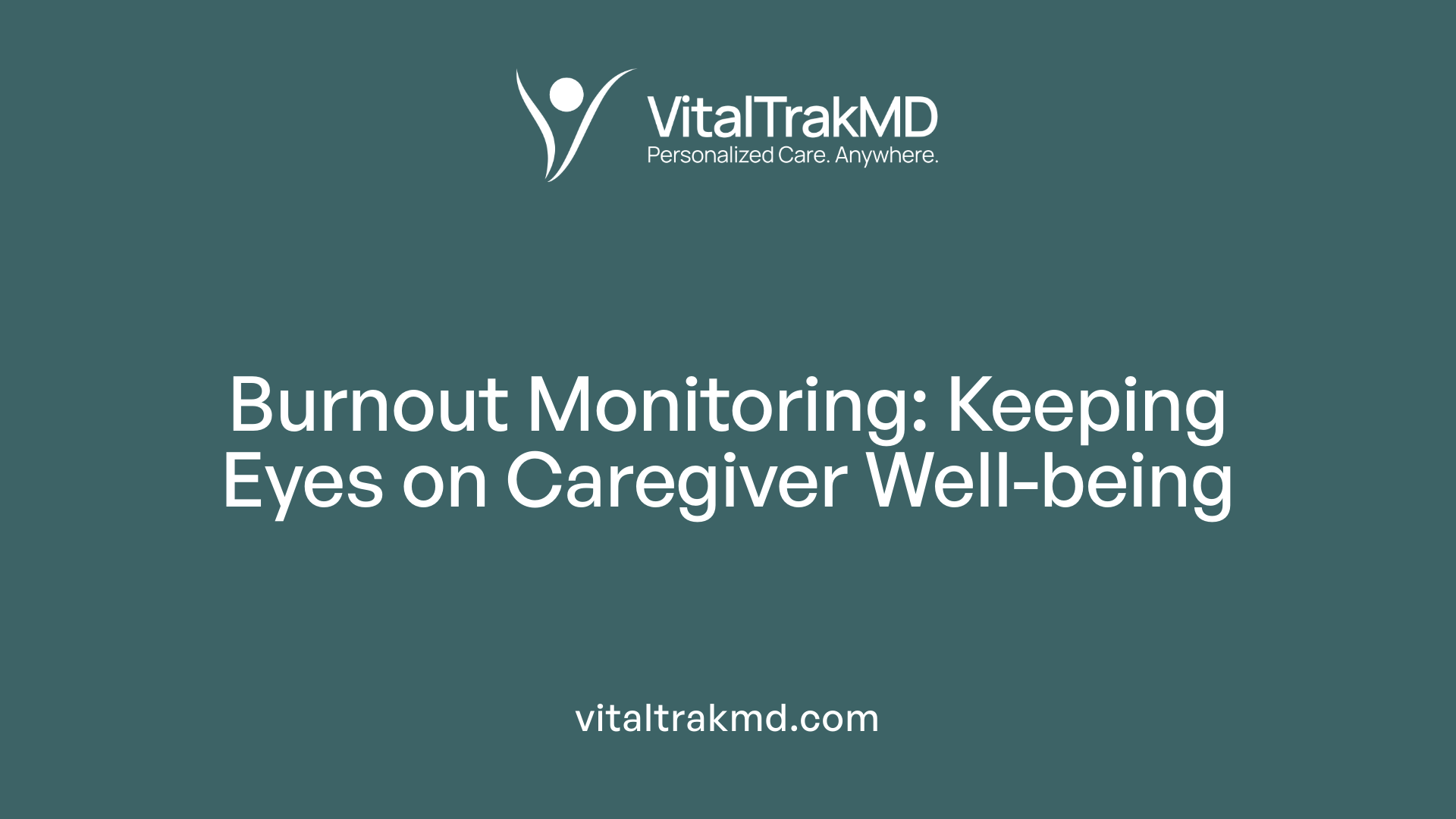
Which assessment tools are effective for monitoring burnout among caregivers?
The Maslach Burnout Inventory (MBI) is a widely adopted tool for evaluating burnout in caregiving professionals. It measures key dimensions including emotional exhaustion, depersonalization, and personal accomplishment, offering a comprehensive snapshot of caregiver well-being.
How does early identification and intervention benefit caregivers?
Early assessment using tools like the MBI enables timely recognition of burnout symptoms. This early identification allows the implementation of targeted interventions such as stress management and resilience training, which can prevent the progression of burnout and its detrimental effects on health.
Why is tailoring prevention strategies important?
Burnout prevention efforts need to reflect the caregivers’ cultural and workplace context for maximum effectiveness. Adapting strategies to align with local norms and specific challenges—as demonstrated in settings like Hungary—ensures better engagement and sustainability of wellness programs. Such tailored approaches promote improved sleep quality, enhanced social cohesion, and greater mental health support, ultimately supporting healthier aging and job longevity among caregivers.
Culturally Sensitive Adaptations in Burnout Prevention

Addressing local norms and challenges
Burnout prevention programs must be tailored to reflect the unique cultural, social, and workplace environments in which they are implemented. Without this cultural adaptation, strategies may fail to resonate with employees or overlook key stressors rooted in local practices and societal expectations. Understanding these nuances helps ensure interventions are relevant, acceptable, and effective.
Examples from Hungary
Hungary provides a compelling example of culturally sensitive burnout prevention. Here, workplace initiatives address specific societal challenges such as high work demands combined with traditional views on work ethic and authority. Adaptations include incorporating local communication styles and respect for hierarchical structures while promoting stress reduction and resilience building that align with Hungarian norms. These tailored approaches help enhance engagement and the sustainable adoption of healthy workplace behaviors.
Importance of cultural tailoring
Culturally tailoring burnout programs enhances their impact by fostering social cohesion and trust, critical components identified in holistic health promotion efforts. It supports mental wellbeing, better sleep, and physical activity by aligning program elements with participant values and lived experiences. Moreover, it facilitates integration into national health policies, thereby extending healthspan and reducing healthcare costs in aging populations. Such sensitivity helps workplace health promotion efforts move from generic models to those deeply integrated within the community fabric for lasting benefits.
The Continuum-of-Care Model: Holistic and Community-Based Support

How does the continuum-of-care model integrate geriatric care approaches?
The continuum-of-care model blends various existing geriatric care strategies into a unified framework to provide comprehensive support for older adults. This model incorporates thorough geriatric assessments and multi-domain behavioural interventions that target physical functioning, nutrition, cognition, and mental health. By emphasizing these interconnected domains, the model addresses frailty prevention and reversal effectively.
What role does multi-sector collaboration play in the continuum-of-care?
Successful implementation depends on collaboration among healthcare providers, caregivers, community organizations, and technology platforms. The model encourages partnerships that facilitate access to hybrid care services, enabling a blend of in-person consultations and telehealth support. These collaborations help expand resources such as coaching, fitness programs, and digital self-monitoring tools, ensuring that older adults receive well-rounded care in their communities.
How can the continuum-of-care model sustain long-term caregiver wellness?
The model acknowledges the critical role of caregivers in reinforcing behavioural interventions and enhancing social support for older adults. It integrates strategies that promote caregiver well-being, including stress management and burnout prevention methods derived from successful workplace health programs. By supporting caregivers' mental and physical health, the continuum-of-care model fosters a sustainable caregiving environment that benefits both patients and their support networks.
Leveraging Digital Platforms for Scalable Weight Management Support

How is the MyChart/MyHealth platform utilized for messaging in weight management interventions?
The MyChart/MyHealth platform plays a pivotal role in delivering automated and tailored messages to patients participating in weight management programs. Participants receive consistent communication through automated alerts that reinforce their goals and encourage adherence. Those facing greater challenges benefit from customized messages and nurse coaching, representing a tiered support strategy that enhances patient engagement and motivation.
How are electronic health records integrated into monitoring progress?
Electronic health records (EHR) are harnessed to collect and monitor weight data seamlessly throughout the intervention. Integration with cellular-network-enabled electronic scales allows for real-time self-weighing data to be automatically recorded into the system. This approach facilitates pragmatic data collection, making it easier to track participants’ progress without additional burden on healthcare providers.
What factors contribute to the scalability and sustainability of this hybrid care model?
The hybrid care model's scalability is supported by its stakeholder-engaged design, which involves collaboration among healthcare providers, patients, and community fitness organizations. Utilizing widely accessible digital platforms like MyChart/MyHealth and electronic scales lowers barriers to broad implementation. Additionally, the cost estimate of approximately US $335 per participant over six months indicates an economically feasible approach. These elements combined suggest potential for sustainable, large-scale deployment of such weight management programs within health systems.
| Aspect | Description | Impact on Program |
|---|---|---|
| Digital Messaging | Use of automated and customized messages via MyChart/MyHealth | Enhances patient engagement and adherence |
| Data Collection | Integration of electronic scales with EHR for real-time monitoring | Streamlines progress tracking and eases provider workload |
| Stakeholder Engagement | Collaboration between healthcare providers, patients, and community organizations | Fosters accountability and tailoring of support |
| Cost Efficiency | Approximately US $335 per participant over 6 months | Supports sustainability and program expansion |
Impact of COVID-19 on Engagement in Hybrid Care Programs
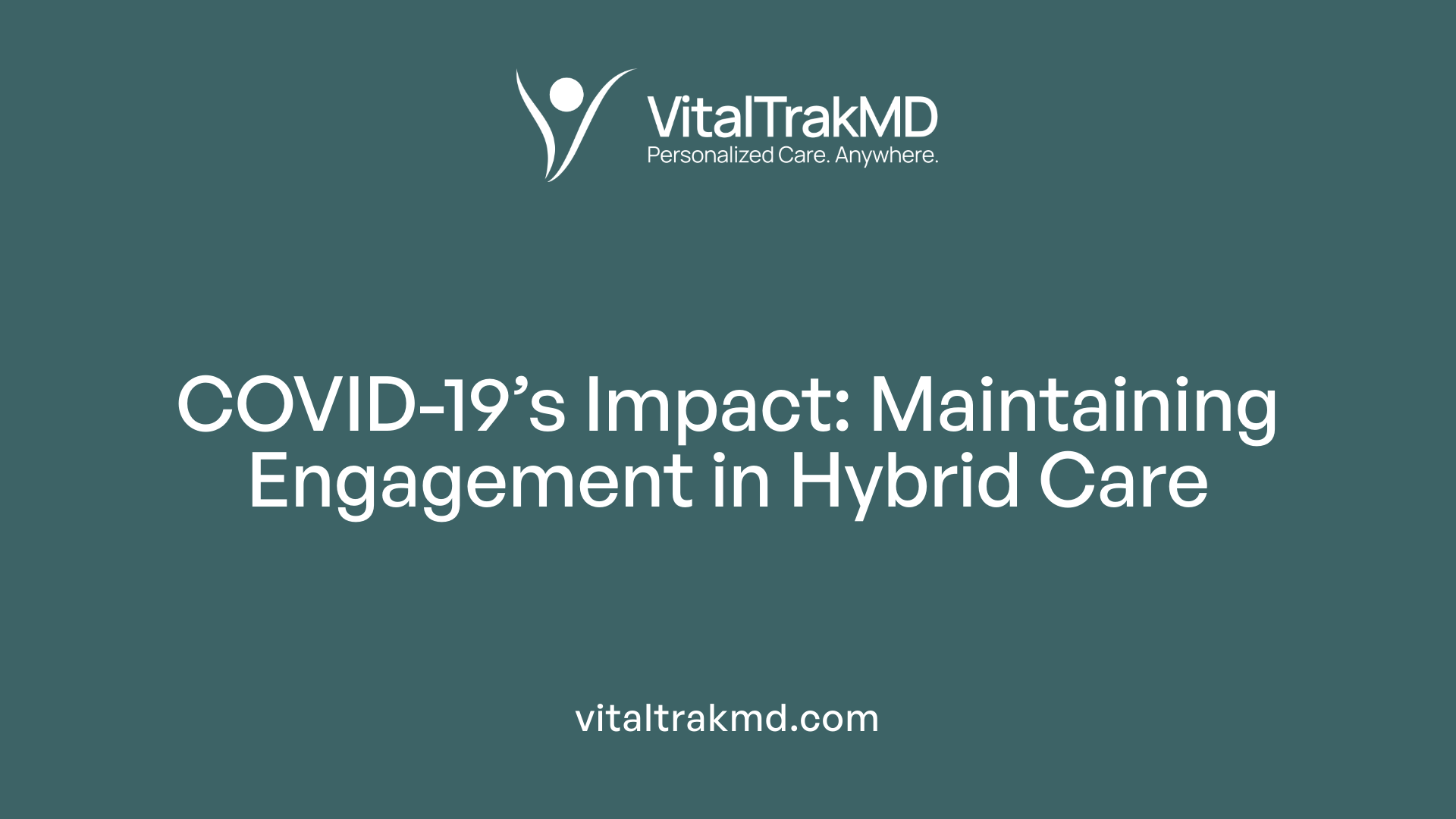
Pandemic-related disruptions
The COVID-19 pandemic significantly affected engagement levels in hybrid care programs, especially those targeting weight management and wellness. Many in-person activities and community-based support options faced temporary closures or restrictions, limiting direct contact and physically supervised intervention opportunities. These disruptions challenged maintaining participant motivation and consistent intervention access.
Adaptations in program delivery
To address these barriers, hybrid care models rapidly adapted by enhancing remote support mechanisms. Programs increased reliance on digital tools such as automated messaging platforms (e.g., MyChart/MyHealth) and virtual coaching. Technologies including cellular-network-enabled electronic scales enabled participants to self-monitor key health metrics like weight within their homes. The tiered approach of providing tailored nurse coaching via telehealth helped address individualized challenges despite social distancing.
Maintaining participant engagement remotely
Sustaining engagement remotely involved frequent communication and facilitating access to online resources. Data showed that participants receiving customized messaging were more likely to self-weigh daily, with 43% maintaining this routine during active remote support phases. Over half enrolled in referral-based lifestyle resources despite pandemic complications, highlighting that flexible delivery and accountability through virtual contacts helped participants stay connected to their wellness goals. Qualitative feedback emphasized the value of continuous support from healthcare providers and fitness professionals, underscoring the importance of social accountability—even at a distance—to maintain motivation amid ongoing pandemic disruptions.
Feasibility and Cost Considerations of Hybrid Care Interventions

How Do Cost Estimates and Sustainability Shape Hybrid Care Models?
The hybrid care approach, integrating in-person and telehealth services, presents a sustainable model by using existing community resources and digital tools efficiently. For example, a recent study estimated the healthcare system expense at approximately US $335 per person over six months for a weight management intervention. This moderate cost supports the feasibility of scaling such interventions without imposing undue burden on health systems.
What Are the Key Aspects of Resource Allocation in Hybrid Care?
Hybrid care emphasizes optimizing resource allocation by leveraging technology and community partnerships. Participants received cellular-network-enabled electronic scales for self-monitoring, while coaching from regional fitness organizations offered tailored support. Automated messaging platforms like MyChart facilitated efficient communication, reducing the need for extensive in-person sessions. This tiered and flexible structure ensures resources are directed where most needed, enhancing care accessibility and reducing waste.
How Do Economic Benefits of Hybrid Care Models Support Their Adoption?
Beyond direct cost savings, hybrid care models improve patient outcomes—such as achieving significant weight loss and improving frailty measures—leading to potential reductions in long-term healthcare expenses related to chronic diseases and disability. Increased patient engagement and satisfaction also contribute to better adherence and lower hospitalization rates, underscoring the economic value of these models. Incorporating hybrid care in public health strategies can thus extend healthspan while controlling costs effectively.
Stakeholder Engagement in Designing Hybrid Care Programs

How does co-creation with patients and providers shape hybrid care programs?
In developing effective hybrid care programs, the active involvement of both patients and healthcare providers plays a crucial role. Co-creation empowers these stakeholders to share insights on personal and clinical needs, ensuring the interventions align with real-world challenges. This collaborative approach was evident in the study on weight management, where stakeholders contributed to designing supportive components such as cellular-network-enabled scales and automated messaging systems.
Why is tailoring interventions to individual needs important?
Tailoring hybrid care interventions to the unique circumstances of participants enhances relevance and engagement. Customizing support—like providing nurse coaching for those facing more difficulties or varying the intensity of messaging—helps address diverse patient profiles. This attentiveness fosters higher adherence, exemplified by increased self-weighing frequency among those receiving tailored messages, leading to better outcomes such as meaningful weight loss.
How does stakeholder engagement improve program relevancy and outcomes?
Incorporating stakeholder feedback enhances the practical applicability and acceptability of care programs. Patients appreciating understandable content and valuing accountability to healthcare and fitness professionals illustrates this point. Moreover, such engagement facilitates pragmatic strategies for enrollment, randomization, and data collection. Together, these factors contribute to improved program effectiveness and sustainability within health systems.
| Aspect | Role of Stakeholder Engagement | Outcome / Benefit |
|---|---|---|
| Co-creation with patients | Provides insights on personal challenges and preferences | Better-aligned resources and enhanced uptake |
| Involvement of providers | Offers clinical perspectives and implementation feasibility | Seamless integration into care pathways |
| Tailoring interventions | Adapts intensity and methods based on individual needs | Higher engagement and improved health results |
| Feedback incorporation | Ensures intervention components are understandable and useful | Increased patient satisfaction and adherence |
Through these collaborative efforts, hybrid care programs become more responsive and effective in managing complex health needs such as frailty, weight control, and overall wellness in older adults and wider populations.
Role of Self-Weighing and Automated Feedback in Weight Management

Frequency of Self-Weighing
Regular self-weighing is a crucial element in effective weight management. In the studied hybrid care model, 43% of participants engaged in daily self-weighing when receiving customized messaging, demonstrating high adherence to this self-monitoring practice. Frequent weighing helps individuals remain aware of their progress and can motivate sustained behavioral change.
Customized Messaging Effectiveness
Customized automated messages, delivered through the MyChart/MyHealth platform, significantly enhanced participants' engagement in self-weighing. Tailored feedback helped maintain motivation by providing personalized encouragement and guidance. Those facing greater challenges received additional nurse coaching, illustrating a tiered support system targeting individual needs.
Behavioral Change Support
Beyond self-weighing, the intervention incorporated multi-domain behavioral support including coaching from healthcare providers and regional fitness organizations. This collaboration fostered accountability and reinforced lifestyle changes such as diet modifications and physical activity. The combined use of digital tools and human interaction creates a comprehensive framework that supports sustainable weight loss and wellness goals.
Emerging Evidence on Reversing Frailty Through Hybrid Care
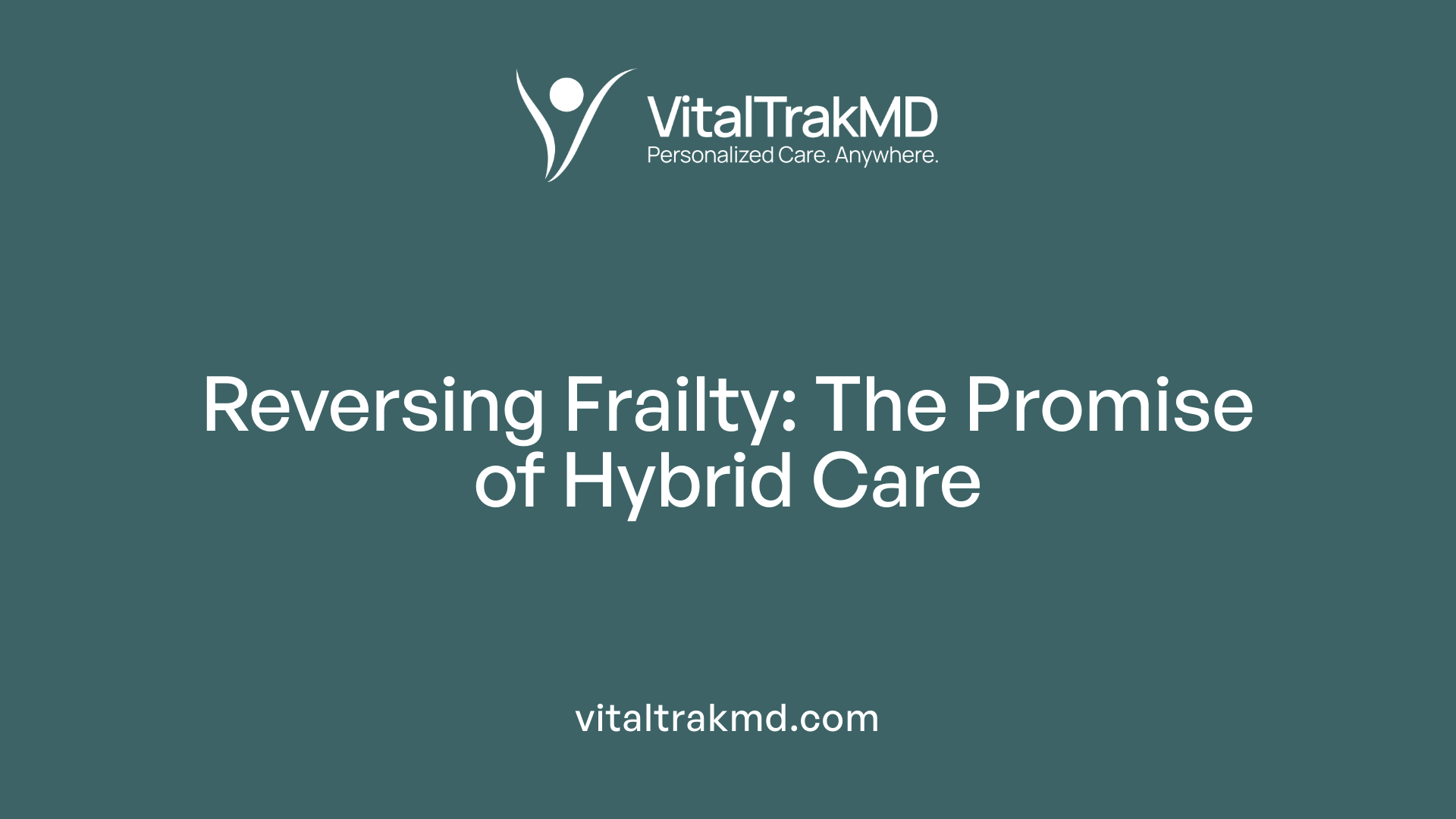
How Are Tailored Interventions Improving Frailty in Older Adults?
Recent studies reveal that combining comprehensive geriatric assessment with behavioral interventions in a hybrid care model significantly improves frailty among older adults. This approach tailors interventions based on theories of self-efficacy and social interdependence, focusing on multiple domains such as physical functioning, nutrition, cognition, and mental health. The multi-domain strategy promotes prevention and even reversal of frailty by addressing the complex needs of older individuals through personalized care plans.
What Physical and Mental Health Improvements Are Observed?
The intervention's effectiveness is measurable with tools like the frail-VIG scale and the Short Physical Performance Battery (SPPB). Participants receiving the hybrid care model demonstrated notable improvements:
- Enhanced physical functioning scores
- Better nutritional status
- Reduced social vulnerability
Statistically significant outcomes included a mean frailty index reduction of approximately 0.19 points, highlighting the program's potential to reverse frailty markers effectively.
How Does the Intervention Empower Caregivers in Frailty Management?
Caregivers play a critical role in reinforcing tailored behavioral practices designed to prevent or reverse frailty. The study emphasizes involving caregivers as part of a continuum-of-care model that connects various geriatric care approaches. By equipping caregivers with knowledge and support, the intervention fosters social support networks vital for sustaining improvements in frailty and overall wellness.
This hybrid approach integrates in-person and telehealth services, enhancing accessibility and enabling continuous engagement between patients, caregivers, and healthcare providers. Such flexibility supports better adherence to interventions, ultimately promoting healthier aging processes among community-dwelling older adults.
Preventing Social Isolation and Enhancing Social Interdependence
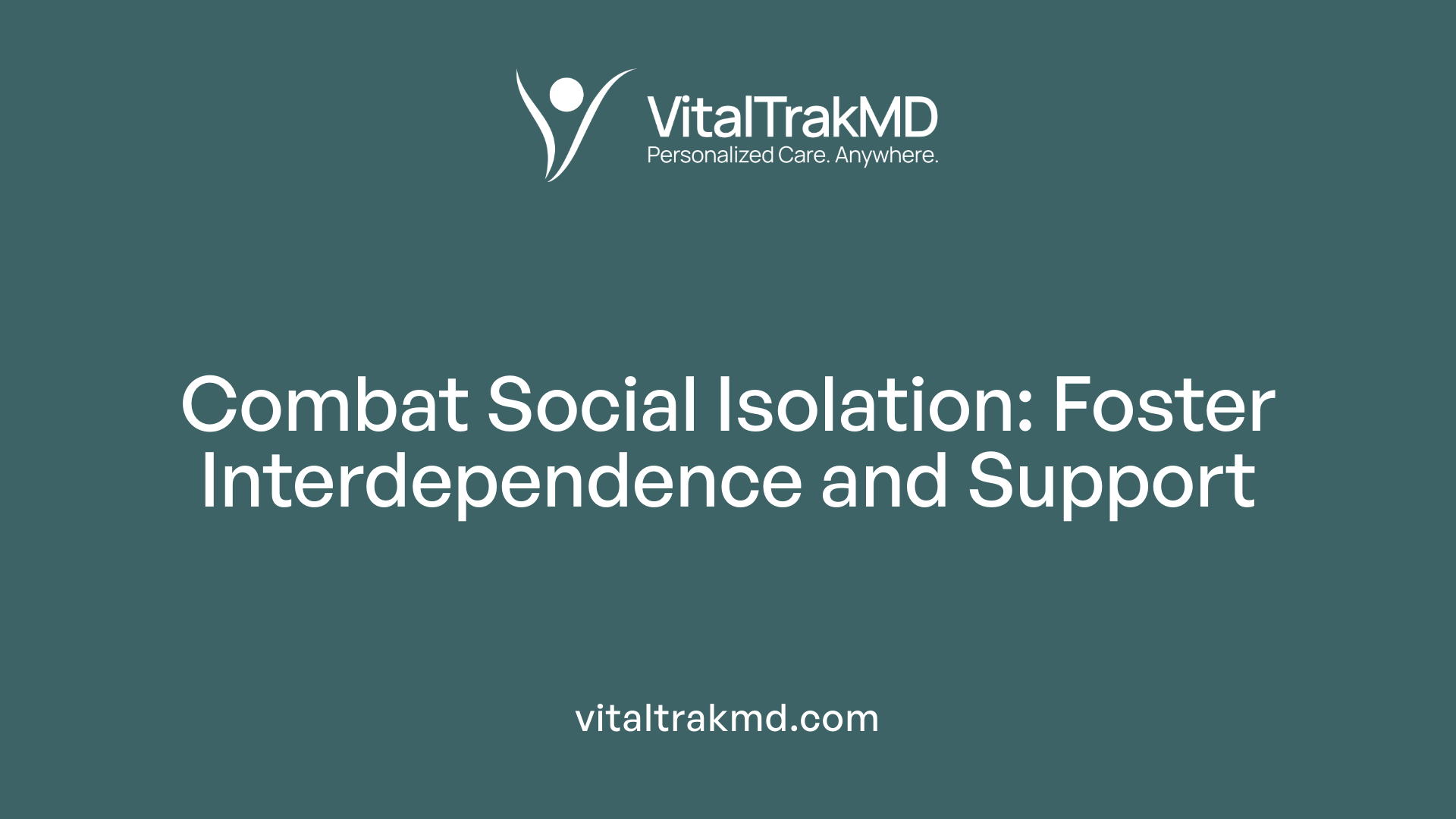
Impact on Caregiver Mental Health
Social interdependence plays a crucial role in supporting caregiver mental health by fostering connectedness and reducing feelings of isolation. Caregivers engaged in community-based support networks benefit from shared experiences and mutual assistance, which alleviate stress and burnout. This is especially important given the high emotional demands placed on caregivers of frail older adults.
Role in Comprehensive Wellness Programs
Incorporating social interdependence into wellness programs creates a supportive environment that reinforces behavioral interventions aimed at improving physical and mental health. Programs shaped by self-efficacy and social support theories encourage caregivers and care recipients to participate actively, thereby enhancing intervention effectiveness. These multi-domain programs address physical functioning, nutrition, cognition, and mental status holistically, and emphasize the caregiver's role in sustaining these positive changes.
Strategies for Community Engagement
Effective strategies to enhance social interdependence involve creating accessible hybrid care models combining in-person and telehealth services. These platforms support flexible interaction, peer support groups, and caregiver education, reducing barriers like geographic distance and time constraints. Additionally, interventions that promote caregiver involvement through automated messaging, coaching, and community fitness resources help sustain engagement. Tailoring these approaches to local cultural contexts further strengthens community bonds and caregiving capacity.
Behavioral Modification Techniques to Sustain Healthy Lifestyle Changes
Goal-setting and Self-efficacy
Goal-setting is a foundational behavioral technique that empowers older adults and caregivers to take actionable steps toward health improvements. Grounded in self-efficacy theory, it emphasizes individuals' confidence in their ability to perform tasks needed to achieve desired outcomes. The studied hybrid care models harness this by establishing clear, realistic goals—such as manageable physical activity targets or nutrition improvements—enhancing motivation and a sense of accomplishment.
Motivational Interviewing
Motivational interviewing is employed within multicomponent interventions to encourage intrinsic motivation for change without resistance. This client-centered counseling method complements self-efficacy by addressing ambivalence, helping participants explore and resolve mixed feelings about lifestyle adjustments. Incorporating coaching from healthcare and fitness professionals—as evidenced in the self-weighing and messaging intervention—fosters accountability while supporting autonomous decision-making.
Long-term Adherence Strategies
Sustaining lifestyle changes requires strategies that promote ongoing engagement and adaptability. In hybrid models, long-term adherence is encouraged through tiered support mechanisms, including automated digital messaging, personalized nurse coaching, and community-based resource referrals. Such multi-domain behavioral interventions address physical, cognitive, nutritional, and social factors, which together create a resilient network that nurtures continuous practice of healthy behaviors.
By integrating these behavioral modification techniques, hybrid care programs not only enhance the initial uptake of healthier habits but also strengthen the capacity of older adults and caregivers to maintain these changes, ultimately contributing to improved frailty management and wellness.
Digital and Community Resource Integration for Sustainable Care
Combining Technology with Local Services
The integration of digital technology with community services creates a robust framework for sustainable care, particularly in managing lifestyle interventions like weight loss. Utilizing cellular-network-enabled electronic scales, patients can easily monitor their weight from home. These devices feed data remotely into health systems, enabling regular tracking without requiring in-person visits. Automated messages through platforms such as MyChart/MyHealth provide tailored reminders and motivation, enhancing engagement.
Fitness Coaching and Resources
Partnering with local fitness organizations offers vital support for individuals pursuing health goals. Free enrollment in coaching sessions helps participants access professional guidance tailored to their needs, complementing digital self-monitoring efforts. This hybrid model ensures that people benefit from both expert advice and technological assistance, facilitating more comprehensive lifestyle changes.
Building Accountability Networks
The presence of healthcare providers and fitness professionals fosters a sense of accountability among patients, which is critical for sustaining behavior modifications. Regular communication and coaching encourage participants to adhere to their goals, such as weight loss targets. Evidence shows that most patients found these support components understandable, useful, and motivating, underscoring the importance of individualized support networks in successful intervention programs.
Mental Status and Cognitive Health Modules in Caregiver Support
How are mental status and cognitive health incorporated in behavioral interventions?
Behavioral interventions designed to prevent or reverse frailty in older adults frequently include dedicated modules on mental status and cognition. These modules are integrated as part of a comprehensive multi-domain approach that also addresses physical functioning and nutrition. Developed using theories of self-efficacy and social interdependence, these modules emphasize both individual engagement and social support to optimize mental well-being and cognitive function.
What are the benefits for preventing cognitive decline?
Including cognitive health components in these interventions supports brain function while mitigating risks of cognitive decline associated with aging and frailty. Evidence shows participants who engage with such modules not only improve in physical and nutritional status but also experience better mental status outcomes. Cognitive stimulation, memory exercises, and counseling on mental health contribute to maintaining or even enhancing cognitive capacities, which is crucial to sustaining independence and quality of life.
How do these modules support caregiver mental acuity?
Caregivers play a vital role in reinforcing intervention practices. By incorporating cognitive health strategies in caregiver support programs, caregivers receive tools to better manage stress, maintain their own mental sharpness, and avoid burnout. This support fosters resilience and social connectedness, which are essential for providing sustained care. Furthermore, strengthening caregiver mental acuity creates a positive feedback loop enhancing overall household well-being.
In summary, embedding mental status and cognitive health modules within behavioral interventions offers vital benefits not only to older adults but also their caregivers. These components help in preventing cognitive decline and promoting mental wellness, thereby complementing physical and nutritional efforts to manage frailty effectively.
Nutrition’s Critical Role in Caregiver and Patient Wellness

What Are Comprehensive Nutritional Strategies in Frailty and Wellness Care?
Comprehensive nutritional strategies within hybrid care models focus on multi-domain interventions that include physical functioning, cognition, and mental health, alongside nutrition. These strategies address the complex needs of older adults and caregivers by emphasizing tailored dietary guidance and education. Nutrition modules are designed to enhance physical health, prevent or reverse frailty, and support overall wellness.
How Does Nutrition Impact Frailty and Weight Management?
Proper nutrition plays a vital role in reducing frailty as shown by studies using the Frail-VIG scale and Short Physical Performance Battery (SPPB) scores. Improved nutritional status contributes to better physical functioning and decreased social vulnerability in older adults. Weight management programs integrated with nutrition counseling promote healthy weight loss goals—such as the 10-pound loss over 10 weeks—which align with evidence-based recommendations and support the prevention of age-related decline. Nutrition also empowers caregivers by improving patient outcomes and encouraging sustained behavioral changes.
What Practical Guidance and Education Support Effective Nutritional Care?
Education delivered through a combination of in-person and telehealth services enables accessible, flexible support. Use of digital tools—like self-monitoring electronic scales and automated messaging—helps patients and caregivers track progress and stay motivated. Coaching resources offered via regional fitness organizations provide accountability and enhance adherence. Tailored communication and lifestyle intervention modules reinforce the importance of balanced diets and adequate nutrient intake, incorporating culturally sensitive adaptations where necessary to align with local norms and maximize impact.
| Component | Description | Benefits |
|---|---|---|
| Multi-domain nutritional modules | Integrated approach covering diet, physical, cognitive, and mental health domains | Addresses holistic needs, preventing frailty and promoting wellness |
| Weight management support | Structured goals supported by self-monitoring scales and coaching | Facilitates sustainable weight loss; improves physical and social health |
| Digital & community resources | Use of electronic scales, automated messaging, regional fitness coaching | Enhances accessibility, fosters accountability, and reinforces behavioral intervention |
This integrated nutritional model exemplifies how nutrition is a cornerstone in supporting both older adults and their caregivers within innovative hybrid care programs.
Physical Functioning as a Key Wellness Metric in Hybrid Care
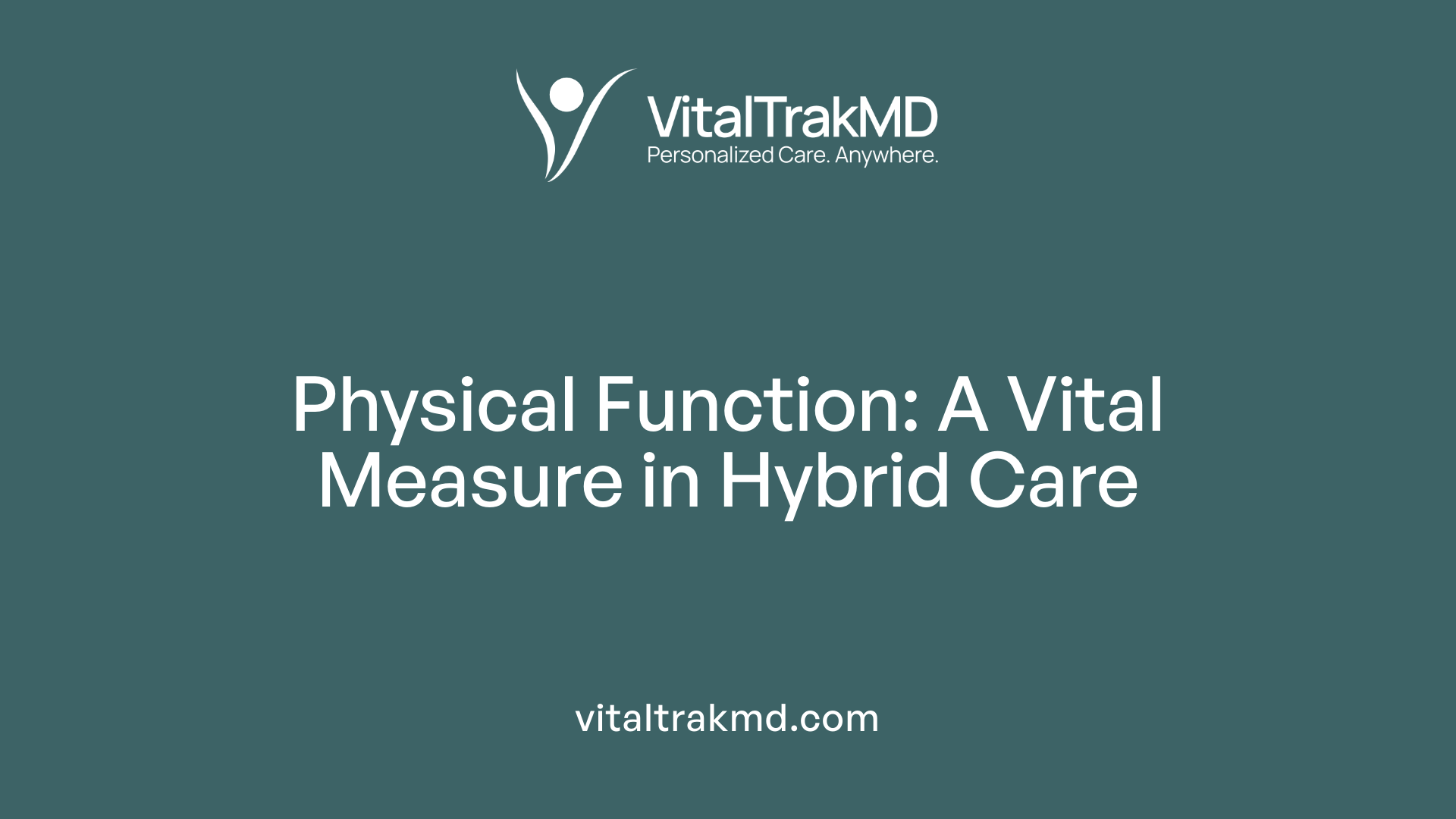
Measurement tools like SPPB
Physical function is a crucial indicator of wellness in older adults and plays a significant role in hybrid care programs that blend in-person and telehealth services. The Short Physical Performance Battery (SPPB) is a widely used assessment tool in this context. It measures balance, gait speed, and lower-body strength to assess mobility and risk of disability. Studies have shown that improvement in SPPB scores reflects enhanced physical functioning, which is critical for independence and quality of life.
Improving mobility and strength
Hybrid models of care incorporate multi-domain behavioral interventions that focus heavily on enhancing physical functioning. Modules targeting mobility and strength, when paired with nutritional and cognitive support, contribute to reversing or preventing frailty. These improvements promote healthier aging and reduce vulnerability, supporting the sustained engagement of older adults in their communities.
Correlation with reduced burnout risk
Physical health improvements are also linked to lower burnout rates, as better mobility supports increased physical activity and social connectedness. Reduced burnout, characterized by less emotional exhaustion and improved professional efficacy, helps preserve cognitive health and decreases age-related health risks. Hybrid care programs facilitating physical function thus indirectly bolster mental well-being and resilience among older people and caregivers alike.
The integration of SPPB-driven assessments with tailored behavioral modules within hybrid care frameworks underscores the importance of addressing physical functioning to enhance overall wellness and support sustainable aging.
Future Directions: Scaling Hybrid Care for Caregiver Populations

What challenges arise in scaling hybrid care for caregivers, and how can they be addressed?
Scaling hybrid care models designed for caregivers involves addressing technological access, patient and provider engagement, and resource allocation. Ensuring equitable access to reliable digital tools is essential; this can be improved by selecting appropriate technologies that accommodate users with varying tech literacy. Training healthcare professionals and caregivers to effectively utilize both in-person and telehealth components fosters better engagement and adherence.
Moreover, integrating caregiver input during program design helps tailor interventions to real-world needs, increasing feasibility. Utilizing scalable platforms such as electronic health records and messaging systems supports efficient enrollment and monitoring without overwhelming healthcare systems.
What are the policy implications of expanding hybrid care programs for caregiving populations?
The growth of hybrid care necessitates supportive health policies that encourage reimbursement for telehealth services and incentivize integration of digital tools within traditional care settings. Policies must promote data privacy and interoperability standards to secure patient information while facilitating communication across providers.
Incorporating caregiver support into national health strategies can improve care quality and reduce costs by preventing caregiver burnout and associated health declines. Encouraging community partnerships broadens access to fitness and behavioral coaching resources, enhancing sustainability.
How can expanded hybrid care impact wellness on a broader scale?
Hybrid care models show promise for promoting wellness beyond frailty management, influencing areas such as weight management, mental health, and caregiver support. Their flexibility enables frequent self-monitoring, personalized coaching, and social connectedness, which are critical for sustained behavior change.
By integrating multi-domain interventions—including physical functioning, nutrition, cognition, and mental status—these programs address multiple aspects of health holistically. Additionally, hybrid care can foster stress reduction and resilience strategies, mitigating burnout-related health consequences and extending healthspan.
Implementing such models broadly may lead to improved quality of life for aging populations and caregivers alike, fostering healthier communities through shared responsibility across healthcare, social services, and community organizations.
Harnessing Hybrid Care to Sustain Caregiver Wellness and Prevent Burnout
Hybrid care models, by merging personalized in-person support with efficient telehealth services, represent a transformative approach to addressing the complex demands placed on caregivers. These models facilitate integrated wellness programs that encompass physical health, mental well-being, sustained weight management, and social support—critical factors in preventing caregiver burnout and promoting healthy aging. As evidence mounts regarding their efficacy and scalability, stakeholders at all levels must prioritize hybrid care integration, technology optimization, and culturally sensitive strategies to realize their full potential. By doing so, healthcare systems and communities can better support caregivers, enhance quality of life, and ultimately contribute to healthier populations across the lifespan.
References
- Hybrid model of care for older persons for improvement of ...
- Rapid synthesis: Optimizing the use of hybrid-care models ...
- The role of burnout prevention in promoting healthy aging
- Hybrid Health IT and Telehealth–Delivered Behavioral ...
- How losing weight can impact mental health
- Fast Facts – Mental Health and Obesity | STOP Obesity Alliance
- Barriers to Obesity Management: Patient and Physician Factors
Recent articles
Want to Feel Better and Live Healthier?
Join hundreds of patients taking control of their health with personalized care that fits their life – not the other way around.
Rated 4.8/5 by 32+ customers







